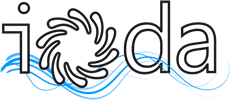Research Fellows
Flavio Gagliardi
Early Stage Researcher 7 at National Technical University of Athens
Recently, with the continuous development of analysis and optimization tools and the growth of computational power, numerical optimization is increasingly applied in shape optimization using Computation Fluid Dynamics (CFD) simulations. Since CFD computations are computationally expensive, numerical optimization methods must discover shapes with improved performances as efficiently as possible. Recent progress with CFD adjoint solvers allows computing gradients at a fixed computational cost, regardless of the number of degrees of freedom, making gradient-based optimization a valuable option. At the same time, progress with gradient-free optimization methods makes them attractive to explore globally design spaces and finding improved shapes according to multiple criteria. Therefore, the work used both gradient-based and gradient-free methods for the optimization of the examined cases; these deal with turbomachinery blade row applications but also include other applications in both internal and external aerodynamics.
A shape optimization method in aerodynamics involves other tools apart from the CFD evaluation tool and the way shapes are continuously improved towards optimal solutions. The parameterization and grid displacement techniques, as well as constraints handling, are among these other tools. The work focused on them by proposing new, advantageous methods, such as the following.
The shape parameterization method is fundamental in all aero/hydrodynamic shape optimization problems. This method determines the design space and the variety of reachable geometries; thus, it has a leading role in the cost and success of the optimization. Particularly in industrial workflows, shape optimization usually begins with the design of a starting geometry using Computer-Aided-Design (CAD) software. This starting geometry becomes the basis for defining the degrees of freedom and the bounds, should these be necessary. In an industrial environment, an evident requirement is that the optimal solutions found by the optimization loop must also be compatible with CAD software, at least to enable the manufacturing process. For this reason, the work focused on CAD-compatible parameterization methods.
Specifically, in the turbomachinery field, the work used and extended a turbomachinery blade row modeling software, GM-Turbo, which has been developed and used in the PCOpt/NTUA: new features and tools that allow its integration into automatic, CAD-based, optimization loops. The parameterization procedure has been differentiated to support adjoint-based optimizations, and software has been programmed to import existing geometries, generated by any other shape modeling tool, into GM-Turbo.
A new method, which will be referred to as CAD-morpher, has been proposed to support shape optimization methods by offering a free-form deformation environment for generic aerodynamic geometries which remain in standard CAD format. The proposed technique requires the definition of a small number of “handles” which are strategically placed around, or on, the shapes to be optimized. Displacement vectors associated with these handles are used as degrees of freedom. Using the Radial Basis Function (RBF)-based interpolation method, these displacements are transferred from the handles to the Non-Uniform Rational Basis-Splines (NURBS) control points of the CAD model; the updated surface remains in CAD format and is, thus, exportable to a STEP file. This tool is differentiated to support adjoint-based optimizations, in addition to gradient-free ones.
Shape optimizations are driven by constraints over and above the performance criteria, which are used as objective functions. Considering constraints during the optimization process is crucial since this determines the effectiveness of the optimal shapes. Therefore, part of the work concerned constraint imposition, including turbomachinery design cases. Two families of constraints are considered. The first one comprises geometric constraints, such as the minimum thickness of turbomachinery blades or the space necessary for allowing the cutting of thread to mount blades in the casing. Some geometric constraints are fulfilled by imposing proper bounds on the degrees of freedom exposed by the parameterization method, whereas others must be considered as non-linear constraints. The second family comprises performance constraints, such as pressure losses in a turbomachinery row, which are always non-linear constraints controlled by the optimization algorithm. Gradient-based and gradient-free state-of-the-art numerical optimization techniques for solving continuous constrained optimization problems are described and applied to shape optimization. These comprise the Sequential Quadratic Programming (SQP) and Evolutionary Algorithm (EA) methods. The latter includes the EASY (Evolutionary Algorithm System) software developed by PCOpt/NTUA.
A CAD-based shape optimization framework has been developed, coupling the flow solver developed by PCOpt/NTUA and its adjoint, GM-Turbo or CAD-morpher and gradient-based and -free optimizers. Within this framework, the adaptation of an existing CFD mesh to the new boundaries of the computational domain is also essential. This facilitates the CFD evaluation of new shape variations by avoiding costly and error-prone re-meshing. Therefore, the work proposed a method to update an existing surface mesh, associated with a shape produced by the parameterization methods mentioned above, to a shape variation. The displacement of the surface grid nodes is, then, used to displace the CFD volume grid. Mesh displacement based on RBF interpolation is used for this task. Methods to accelerate the mesh displacement are investigated, and a new two-step RBF-based mesh displacement method is proposed. In this method, among other techniques, the Fast Multipole Method (FMM) and the Sparse Approximate Inverse (SPAI) preconditioner are used to reduce the computational costs of the RBF interpolation.
The framework is applied to shape optimization cases to show the effectiveness and performance of programmed tools. The examples include the optimization of (1) a double elbow duct, with SQP, to minimize total pressure losses; (2) a compressor stator, with SQP and EA, to minimize the deviation of the exit flow from the axial direction and total pressure losses compliant with geometric constraints; (3) a turbine stator, with SQP and EA, to maximize capacity and minimize total pressure losses; (4) an aircraft, with EA, to minimize drag and maximize lift.

